A Lesson in LoR Innovation
You know what really grinds my gears? A lack of motor oil.
But what occasionally irritates me is the dialogue around “try harding” or “net decking” versus “innovating.”
I know the real answer is just to stay off Twitter, but being who I am, I can’t help but try to solve the problem at least a bit.
I’m Jordan, “WhatAmI” Abronson, and I don’t think that most people really understand what innovation is or how to go about it.
So today I’d like to take some time to discuss conception versus reality and give people some tips on how to do it effectively.
What is innovation?
Most folks who are against “try-harding,” and “net decking,” look at innovation as the process of making something new. Or perhaps, more importantly, making something yourself instead of taking ideas from others.
If I ask a dictionary though, it will helpfully inform me that the first definition of innovation is “To make changes in something established.” This is because mostly, either in Runeterra or life, whatever you want to do has been done before by someone.
Shakespeare said, “there was nothing new under the sun” and I’m sure that I’ve heard something similar about the decks of a certain Mr. Mogwai. So since generally, our goal is to do the coolest and most powerful things possible, we start from someone else’s idea that is close to our own and build from there.

I cannot count the number of times I have heard something along the lines of “That’s not innovative, just a net deck that changed two cards.” We can have an entirely separate argument some other day about the goods/ills of net decking, but that is literally the definition of innovation there.
While new ideas built from the ground up are cool and all, and do occasionally happen, they are exceedingly rare. Saying the only reasonable decks to play are things you made completely yourself is ridiculous in the extreme. To paraphrase, “We live in a metagame.”
How can we become innovators?
So, some small amount of hopefully excusable ranting aside, I’d like to get to today’s main topic. If we do want to try to be innovators, how do we do it? Well for me, as most things do, this will always come down to defining our win conditions.
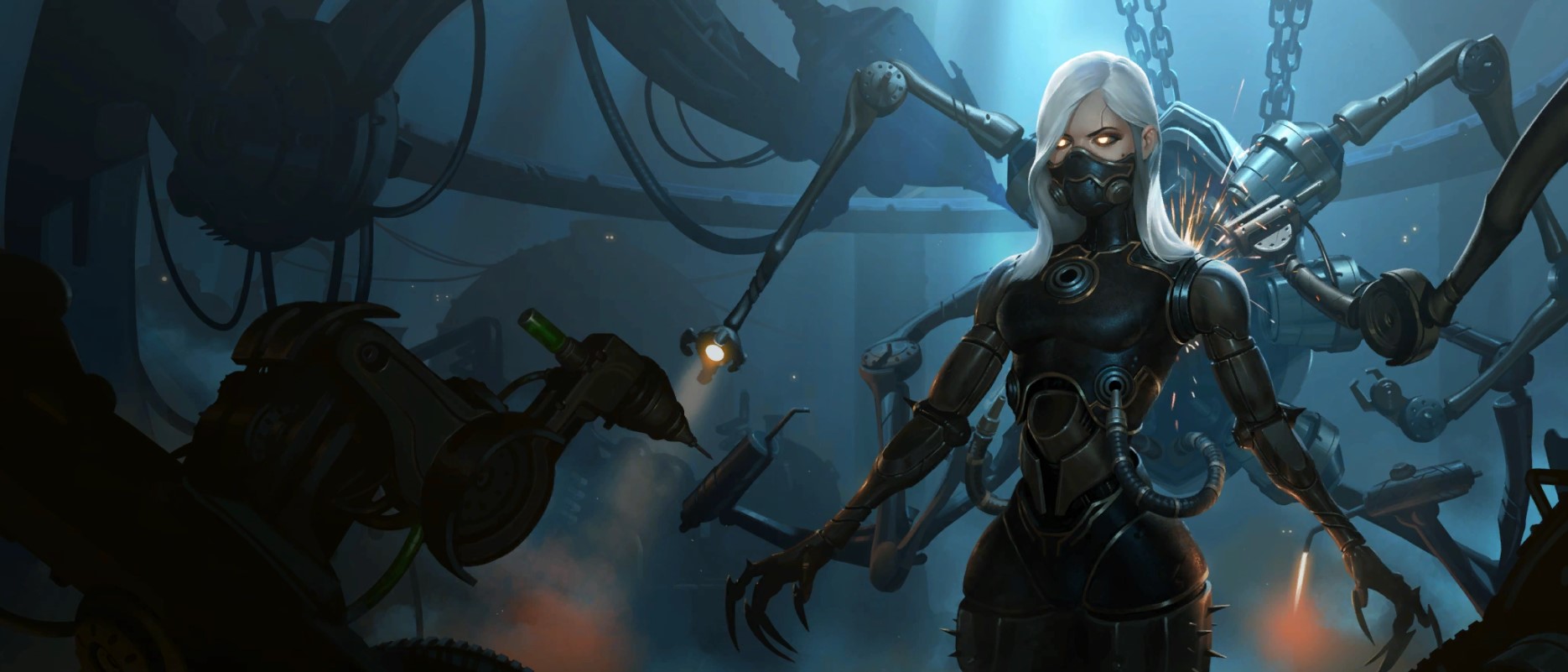
Deckbuilding, in general, is such a cool concept to me because at every card change you have to ask yourself “What does this do better and what does it do worse.” This is the key starting point for, in my opinion, basically all varieties of deck innovation.
This is a bit simplified, but I think most examples will or should eventually fall into something that looks an awful lot like this four-question process.
- What do we want to do?
- How can we do it?
- What did this cost us?
- Was it worth it?
Step 1: What do we want to do?
Alright, so there is also a secret step zero in there that asks the question, where do we start? Sometimes the answer is nowhere and we make it all ourselves. Usually, though you have a favored deck you are already playing you are trying to make better, or something that is almost there that just needs a tweak or two.
For this example process, I will use my seasonal work on Akshan/Sivir Demacia. So that’s our step zero. What I wanted was to take this deck that was powerful in many other facets, and finds a way for it to beat Sion lineups.
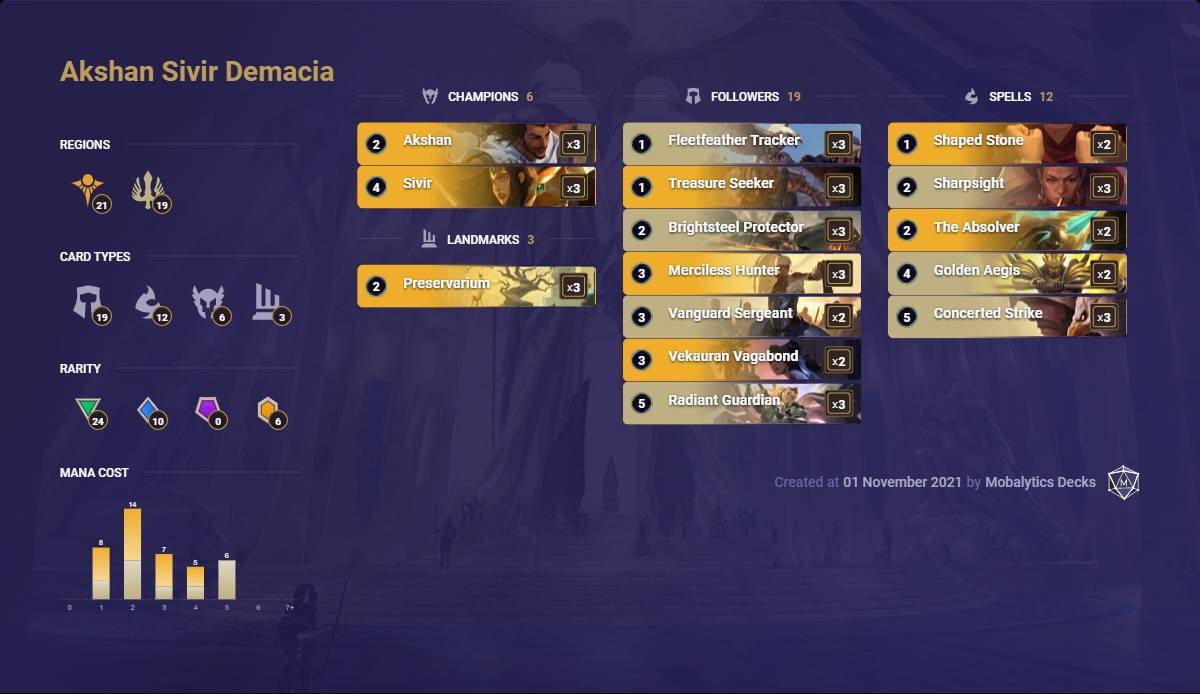
Deck code: CECAGAIABEHR2BIEA4GRINTHQIAQCAYABYAQEAABAMBQIB25QAAYUAIBAEAAMAIEAABAA
[See Akshan Sivir Demacia deck details]
Now, trying to bulldog our way into a good Sion matchup would require changing the deck so completely we might as well start from a different point. So instead we can focus on what people were bringing alongside Sion.
The four most common decks that Sion was accompanied by at the time were Ping City, Bandle Burn, Plunder, and Lee. Our starting point had us pretty solid into Lee, but feeling kind of bad into the rest, so now we’ve got a goal.
Step 2: How can we do it?
My first thought when looking at this problem was that the answer was more one and two drops. Beef up the consistency of the deck so it can trade well in the early game. This will let us deny plunder triggers and keep our life total stable so our more powerful finishers can take over in the mid-game turns.
The issue with that plan was that I was already playing a deck that ran out of gas unfortunately quickly betimes. Leaning into that harder meant that I was actually losing consistency in much of my game plan. So that clearly wasn’t the answer. Where then to turn?
Well, the other thing these decks have in common is that they like to do damage in many smallish chunks, and often look for ways to come up with burn lethal to finish out games. What is good against both of those game plans? Tough and Lifesteal. Enter Radiant Guardian stage left.
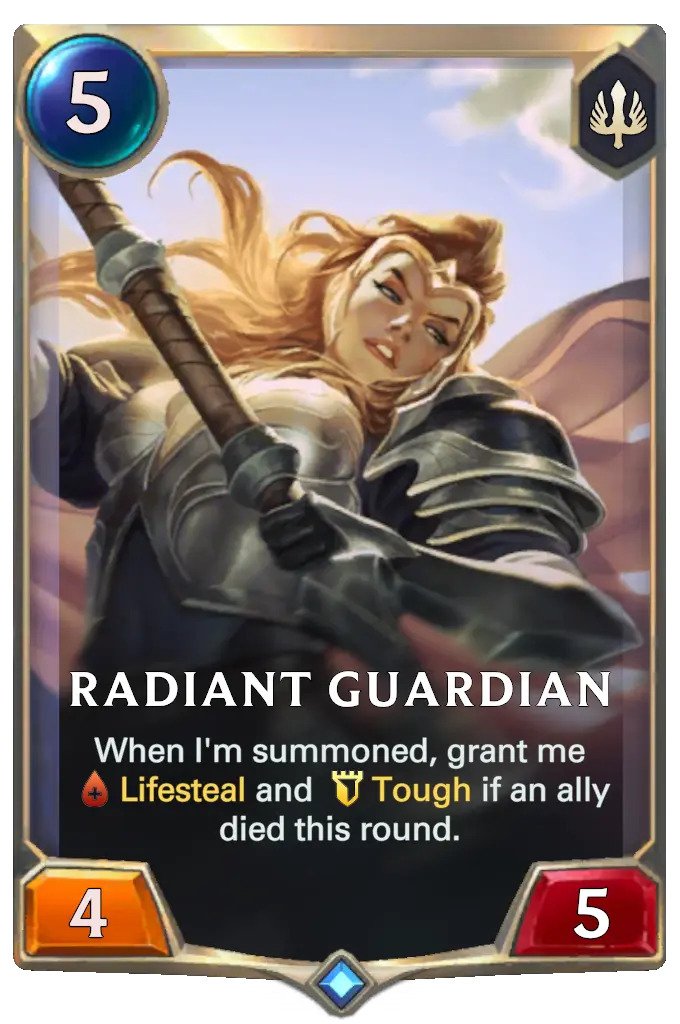
Radiant, it turned out, was a very good answer to these problems. Shrugging off pings, being an amazing pump or combat spell target, and generally wrecking my target’s gameplans. We could even consistently trigger her off of Waking Sands, something I didn’t realize when I first thought of the idea.
Step 3: What did it cost us?
I knew that three Radiant Guardian would significantly swing the matchups I wanted to swing, but those were slots that other cards were in, right?
So, what was I giving up to get access to this powerful tool?
The answer was the brutal efficiency of the other five drop units that could take that slot. Mainly Screeching Dragon, Vekauren Bruiser, or Ruin Runner.
This translated directly to a small but noticeable dip in the percentage points we gained against other non-ping midrange decks and control.


Step 4: Was it worth it?
This can be the hardest one, especially mentally. Because if you’ve made a cool change that feels like it should be good and just isn’t quite doing enough, it’s hard to be willing to set it aside. Objectivity, and being willing to edit our own creations is one of the toughest challenges any innovator can face.
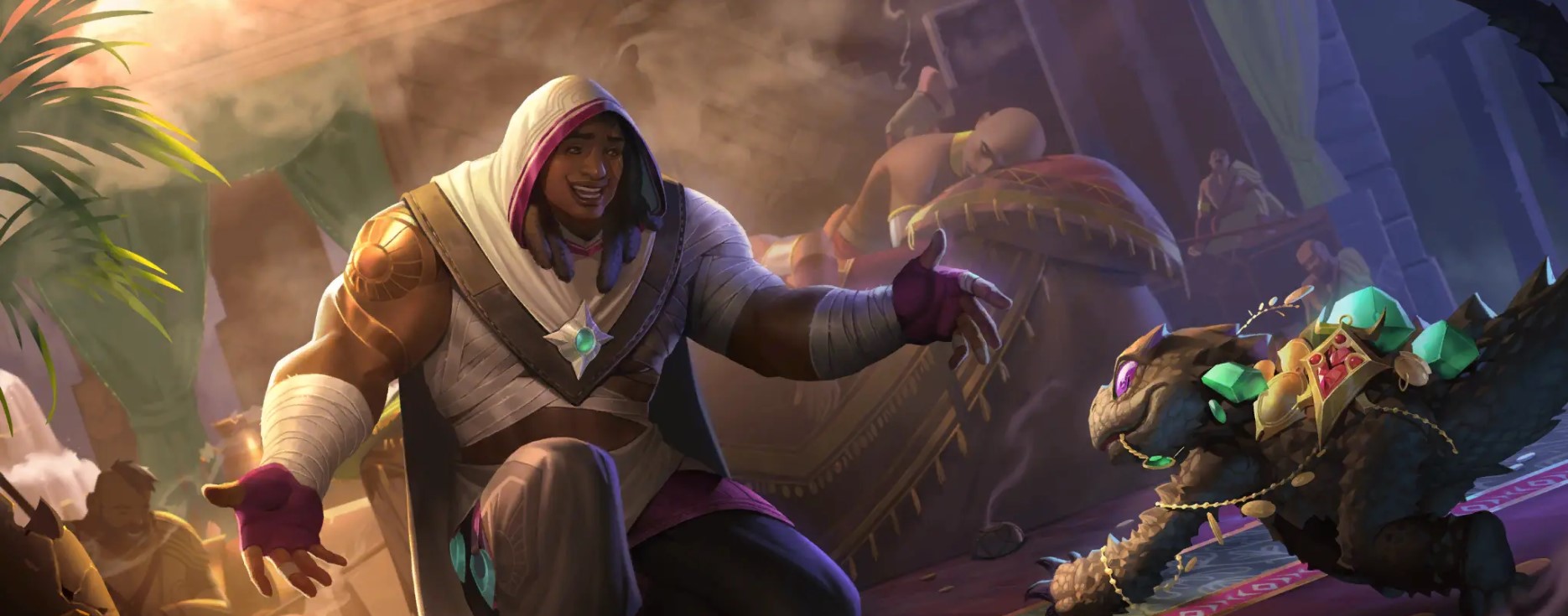
In this case, the answer was yes, for that specific tournament. Burn decks showed up in absolute droves and the tech saved me any number of times. However, I failed to re-evaluate between there and the top 32 of that seasonal, kept the Radiant Guardian tech in, and that as well as a splash of unfortunate luck led to my swift exit from that bracket.
This leads us to the secret step five, just as important as step zero. And it’s this step that makes me question why so-called “net decking,” is a bad thing in the first place.
The Wheel Keeps Turning
What’s on top yesterday may slip. A new threat may arise. In the absolute best-case scenario what happens is that you really did break the format and now you’re the top dog. Now you have to change things up simply because people are beginning to specifically target the strategies you put into practice.
If I make a crazy new innovation and win with it for a couple of weeks without changing, suddenly I’m in the past. People are smart. They will catch up. They will target you and find ways around you. That’s the most fun part of this crazy shifting game.
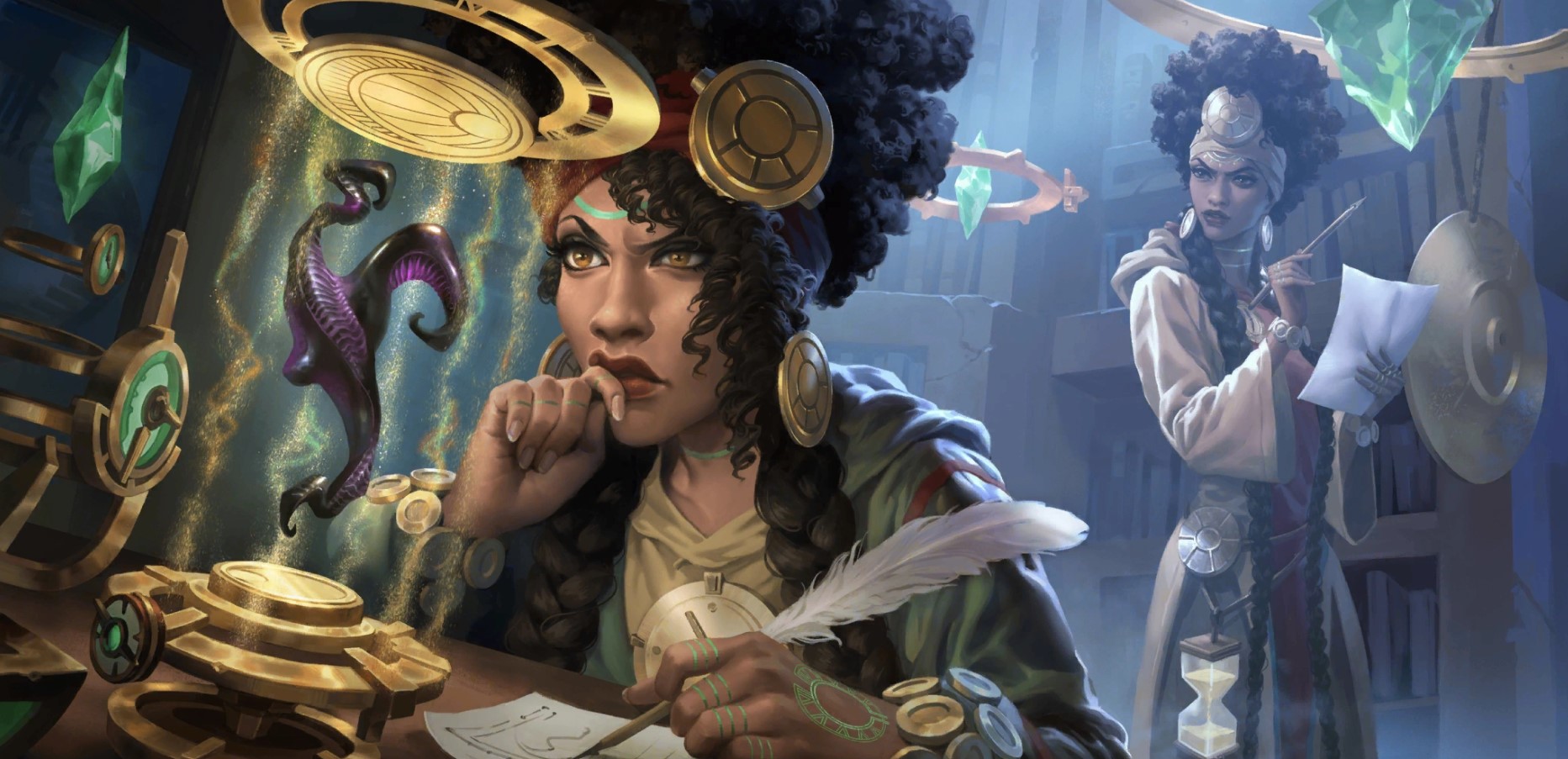
No one can innovate every moment of every day. Not me, not Mogwai, not nobody.
So while innovation is an amazing and fun thing to do, maybe if we’re all going to be behind the curve at some point, we can also stop hating on people who just want to play what looks good and fun to them instead of trying to run on this ever-moving treadmill we call a metagame.
Just food for thought.
Thanks for reading! If you have any questions, feel free to ask WhatAmI during his streams (around 10AM PST basically every day).
WhatAmI streams at twitch.tv/xxwhatamixx around 10AM PST every day
Subscribe to our newsletter:
Don’t miss out on all of the latest LoR content!
 Download APP
Download APP